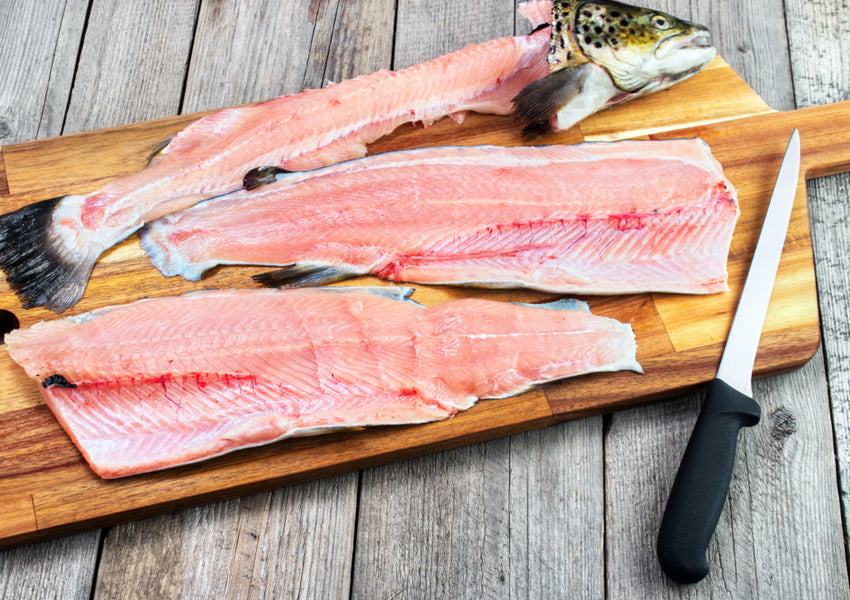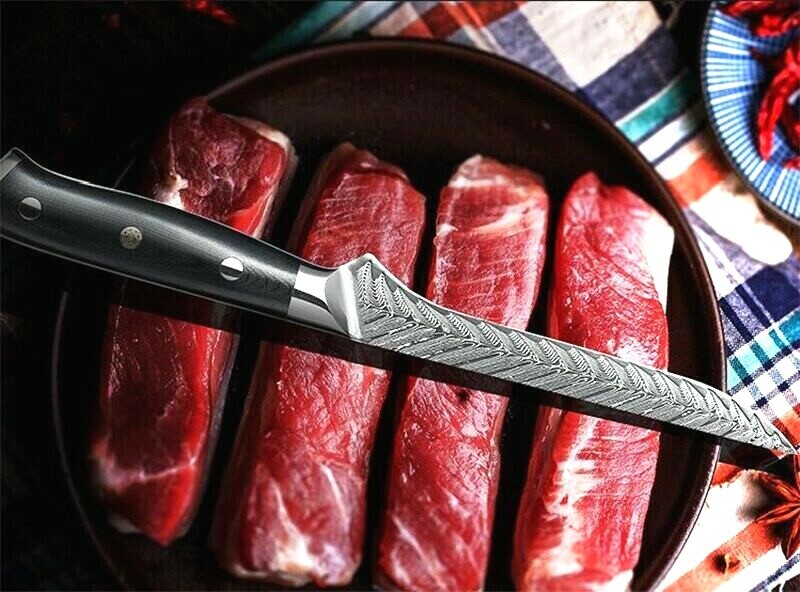A boning knife for game meat is an indispensable tool for anyone who enjoys processing their own game. This specialized knife is designed to make the task of removing bones from meat much easier and more efficient. Whether you’re a seasoned hunter or a culinary enthusiast, understanding the importance of a boning knife can greatly enhance your meat preparation experience.
The design of the boning knife, with its sharp, narrow blade, allows it to navigate around bones and joints with precision. This is particularly important when dealing with game meat, which can be tougher and more sinewy than store-bought meat. For those interested in learning why a boning knife is crucial, you can find more insights in our detailed guide on why use a boning knife.

Understanding the Boning Knife
Design and Features
The boning knife is characterized by its narrow, flexible blade, which typically ranges from 5 to 7 inches in length. This flexibility is key when working with game meat, as it allows the knife to bend and follow the contours of bones, resulting in cleaner cuts and less wasted meat.
Types of Boning Knives
There are several types of boning knives available, each suited for different kinds of tasks. The most common types are stiff and flexible boning knives. A stiff boning knife is ideal for beef and pork, where precision is less critical, while a flexible boning knife is perfect for poultry and fish. For more on this, check out our article on boning knife for fish.
Using a Boning Knife for Game Meat
Preparation and Safety
Before using a boning knife, it’s essential to ensure that it is properly sharpened. A sharp knife not only makes the job easier but also safer. Dull knives require more force, which increases the risk of accidents. Learn more about honing a boning knife to keep your tool in top condition.
Techniques for Deboning Game Meat
When working with game meat, it’s important to have a clear understanding of the anatomy of the animal. This knowledge will help you make precise cuts and avoid damaging the meat. Start by identifying the bones you need to remove and carefully work the knife around them.
Choosing the Right Boning Knife
Material and Construction
When selecting a boning knife, consider the material of the blade. High-carbon stainless steel is a popular choice due to its durability and resistance to rust. Additionally, the handle should provide a comfortable and secure grip, which is crucial for maintaining control while cutting.
Price and Quality
While it’s tempting to opt for a cheaper knife, investing in a high-quality boning knife can save you money in the long run. A well-made knife will last longer and perform better, making the initial investment worthwhile.
Maintaining Your Boning Knife
Cleaning and Storage
Proper care is essential to maintaining the longevity of your boning knife. After each use, wash the knife with warm, soapy water and dry it immediately to prevent rust. Store it in a knife block or sheath to protect the blade and keep it sharp.
Sharpening and Honing
Regular sharpening and honing are crucial to keeping your boning knife in optimal condition. While honing should be done frequently to maintain the edge, sharpening is required less often, depending on the frequency of use.
Benefits of Using a Boning Knife
Using a boning knife offers several benefits. It allows for precise cuts, reduces waste, and makes the process of deboning faster and more efficient. This is particularly important for hunters who need to process large quantities of game meat quickly.
Conclusion
In conclusion, a boning knife for game meat is an essential tool for anyone who enjoys processing their own meat. Its unique design and features make it the perfect choice for deboning tasks, ensuring that you get the most out of your game meat. For more detailed information on boning knives, visit this comprehensive guide on boning knives.

FAQs
What is the best material for a boning knife?
High-carbon stainless steel is often considered the best material for a boning knife due to its durability and resistance to rust.
Can I use a boning knife for fish?
Yes, a flexible boning knife is ideal for fish as it allows for precise cuts and can easily navigate around small bones.
How often should I sharpen my boning knife?
It depends on how frequently you use it. Regular honing can maintain the edge, but sharpening should be done every few months or as needed.
This article contains affiliate links. We may earn a commission at no extra cost to you.


